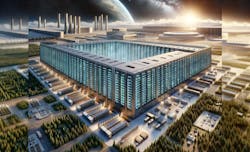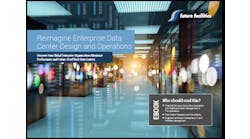“You’re gonna need a bigger boat.”
A classic line from Hollywood, highlighting the importance of adapting to changing conditions.
What’s it got to do with data centers? Well, we’ve been through a number of stages in the evolution of data center development. And we’ve seen demand outpace capacity year after year, leading to more construction in more markets around the world. But demand invariably grows faster than providers can build and bring online, meaning that, in many cases, even hyperscale data centers, ranging from 20MW to 50MW, are not going to be able to accommodate requirements of high-performance computing. Simply put, the biggest players in cloud services, digital media, and artificial intelligence (AI) need bigger boats.
That means growing from building 50MW hyperscale data centers to developing over 500MW exascale data campuses. We are now entering the gigawatt era. It means power to the rack also scales by a factor of 10x from 5 or 10kW to 50 or 100kW or more. It means new tools and technologies to generate and store power when traditional grids are unable to deliver adequate electricity for years into the future.
Taken together, it means developing a new generation, a new class of super-sized and super-powered data centers: The Exascale Data Center is here.
The benefits of an exascale data center are clear:
- Better economies of scale for generating dedicated power on-site or nearby
- More efficient power utilization
- High-density designs that can concentrate more computing power for today’s – and tomorrow’s – high-performance requirements
- More effective management of carbon emissions, water usage, and waste diversion
- Ability to merge integrated Cloud & AI factories co-locating the diverse ecosystem of providers delivering the next generation of tools and technologies empowering the digital economies of the world
Industry-wide, PUE (Power Utilization Efficiency) dropped from 2.5 to 1.5 between 2007 and 2018 according to Uptime Institute, even as overall capacity skyrocketed. This decline was due, in large part, to the introduction of more efficient chip and server design, higher-density storage, and the rise of hyperscale facilities that used newer cooling, water, and operations tools and technologies to run more efficiently and replaced a large number of older, smaller data centers that were often owned and operated by individual enterprises before they migrated to hyperscale-resident cloud services.
PUE numbers have flattened over the past few years, but exascale deployments offer fresh new opportunities to re-accelerate the trendline of improved power efficiency with high-density power deployments delivering dramatically more capacity in a smaller physical footprint, exactly the configuration required by Machine Learning (ML) and AI services.
In addition, exascale designs can take advantage of new cleaner, more efficient technologies to improve water usage, heat dissipation, waste diversion, and carbon emissions, across a facility’s entire lifecycle, from site selection and construction through to day-to-day operations.
Still, a key question facing exascale deployments centers on supplying the massive amounts of power these new buildings will require. Grid operators are challenged in markets around the world, frequently unable to deliver needed megawatts for years into the future. Data center capacity and demand have risen so rapidly that most operators have not been able to invest in and plan for delivering the electricity required by hyperscale deployments much less for newer exascale roll-outs.
Innovations in on-site or near-site power generation can be more efficient, more timely, and more economical in the exascale model. This accelerates deployment timeframes, relieves one source of pressure on grid operators, and offers increased opportunities to use renewable or carbon-free energy sources. In some instances, it can even contribute power back into the primary grid.
For exascale deployments, on-site or near-site power storage can provide efficient, cost-effective reliability against spikes or outages that may occur for defined periods of time.
We will continue to see more powerful chipsets, more efficient servers, better cooling systems, cleaner construction materials and practices, and data center designs that prioritize energy-saving operations. But exascale solutions will help us maximize the benefits of these advances by concentrating them into data centers that can take maximum advantage.
Of course, there is a risk that exascale data centers may be built without the emphasis on efficiency, reliability, and sustainability outlined here. But it’s worth noting that an approach that ignores these realities can actually degrade the benefits of these deployments, using more power, generating more emissions, increasing operational costs, and reducing reliability. It also dramatically increases the odds of damaging relations with surrounding communities.
In the film ‘Jaws’, they needed a bigger boat to take on an adversary that was much larger and more powerful than they initially planned for. So, they had to adapt to reality and adjust their plans.
High-performance computing technologies like AI are not our adversaries, but they do introduce an entirely new scale of demand. And data center providers who serve the customers rapidly developing and deploying these new services are adapting to a new, fast-moving reality. Exascale data centers, deployed thoughtfully – even relying on AI to help optimize designs – can help empower these services quickly, cleanly, and reliably, in a growing number of markets around the globe.

Phillip Marangella
Phillip Marangella is Chief Marketing and Product Officer for EdgeConneX. EdgeConneX, is a global data center provider focused on driving innovation. Contact EdgeConneX to learn more about their 100% customer-defined data center and infrastructure solutions.






